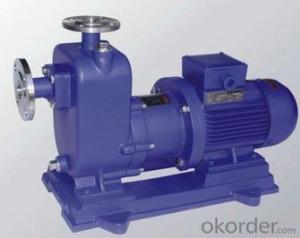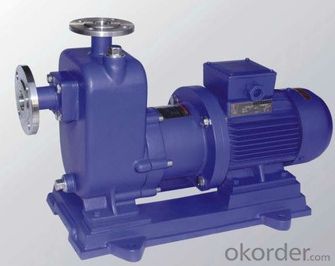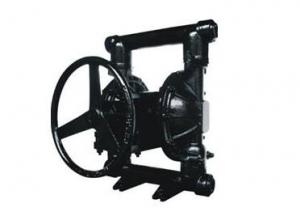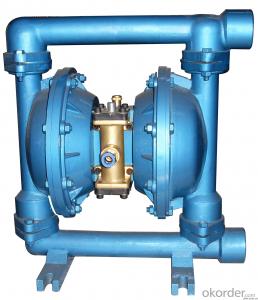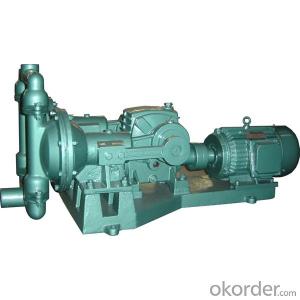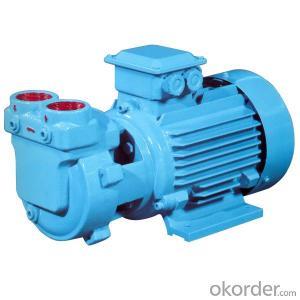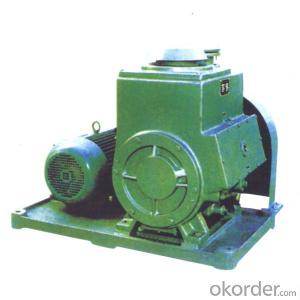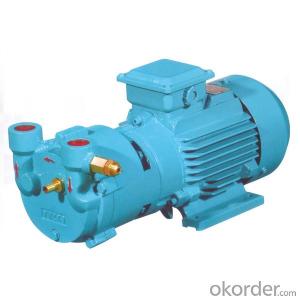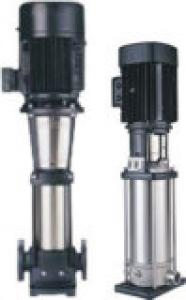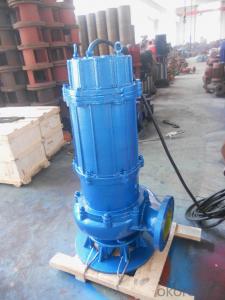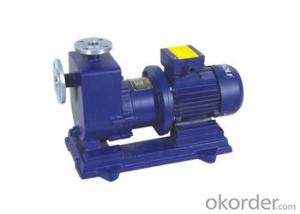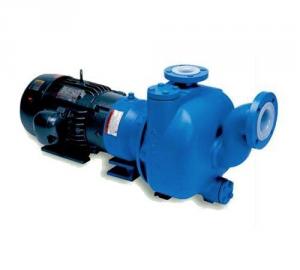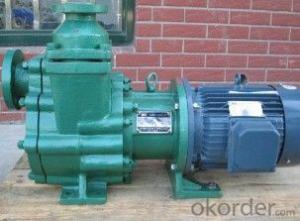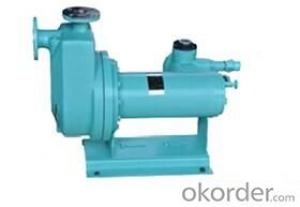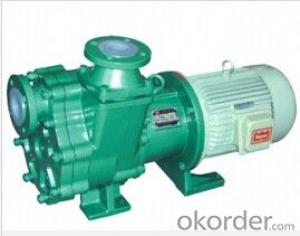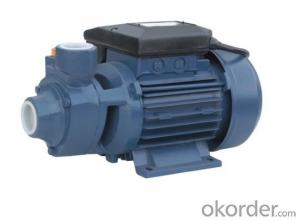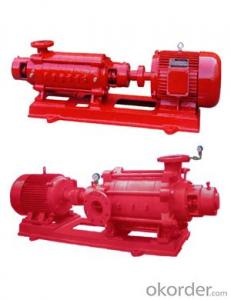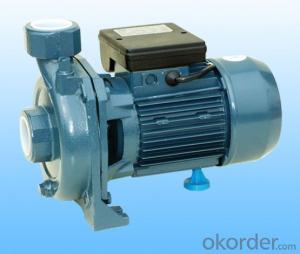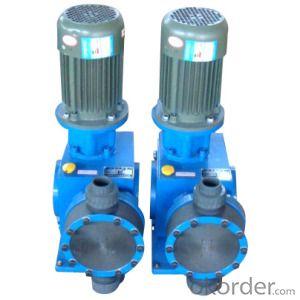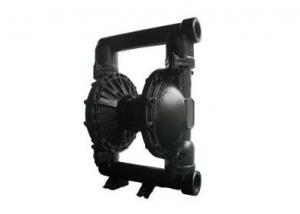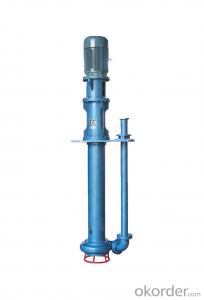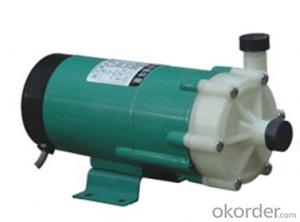ZCQ Self-Priming Magnetic Leakless Seal Chemical&Dosing Pump
- Loading Port:
- China Main Port
- Payment Terms:
- TT OR LC
- Min Order Qty:
- -
- Supply Capability:
- -
OKorder Service Pledge
OKorder Financial Service
You Might Also Like
Flow :3-50 m3/h
Head:12-50 m
Power: 0.37-18.5 kw
Feature :
It is also called magnetic drive pump, using modern magnetic theory. Magnetic pumps adopt internal and external magnetic steel to delivery.
This pump are remodeled based on the Series CQ magnetic pumps with the recent advanced technologies of the field. The product combines the advantages of the magnetic pumps such as fully sealing and corrosion resistance, and the features of self-priming pumps such as simple line structure without bottom valve and easy operation without filling liquid for being primed. The maximum priming height is 4 m.
Application :
The self-priming magnetic pumps are widely used in the petroleum, chemical, pharmaceutical, electric plating, dyeing and printing, food, agrochemical, and metallurgical industries for pumping acids, bases, oils, valuable liquids, toxic or volatile liquids, especially flammable, easy to leak and explosive fluids.
- Q: Is there any difference between an air pump and a compressor?
- Yes, there is a difference between an air pump and a compressor. An air pump is typically used to inflate objects like tires, balls, or inflatable toys. It operates by manually pumping air into the object. On the other hand, a compressor is a mechanical device that compresses air to higher pressures. It is commonly used in industrial applications to power tools, operate machinery, or supply pressurized air to various systems. Compressors are typically more powerful and capable of generating higher pressure levels than air pumps.
- Q: How does an air pump handle water exposure?
- An air pump is not designed to handle water exposure. When an air pump comes into contact with water, it can cause damage to the internal components, leading to malfunction or even complete failure. Water can corrode the metal parts of the pump, damage the electrical wiring, and cause the motor to short circuit. In addition, water can also enter the air intake, which can disrupt the airflow and compromise the pump's ability to generate air pressure. Therefore, it is crucial to keep an air pump away from any water source and ensure it is properly protected from any potential water exposure.
- Q: Are air pumps suitable for medical facilities?
- Medical facilities find air pumps to be suitable for their needs. These pumps are commonly employed in various capacities within the medical setting. Primarily, they are utilized in respiratory therapy to administer oxygen to patients who require assistance in breathing. Furthermore, air pumps power a range of medical devices, including ventilators and anesthesia machines, in the operating room. Moreover, air pumps have proven effective in wound care, facilitating the healing process for specific wound types through negative pressure wound therapy. Consequently, air pumps are indispensable equipment in medical facilities, playing a vital role in promoting patient well-being.
- Q: The 7.5kW motor pumps the generator and directly uses the diesel engine, which is economical
- I think it's cost-effective to drive directly from diesel engines. The reason is that any mechanical transformation has an efficiency problem. The efficiency of converting a diesel engine into a generator is 80%, and the generator to the compressor is 80%. Then the conversion efficiency from the diesel engine to the generator to the compressor is only 56%. The direct conversion efficiency from the diesel engine to the compressor can reach 80%.
- Q: How does an air pump regulate the flow of air?
- An air pump regulates the flow of air by using a combination of mechanisms such as valves, pressure sensors, and regulators. Valves control the direction and rate of airflow, allowing air to be pumped in and out. Pressure sensors detect the pressure inside the pump and send signals to the regulator, which adjusts the pump's operation to maintain a desired airflow rate. By continuously monitoring and adjusting these components, the air pump can effectively regulate the flow of air.
- Q: Can an air pump be used for inflating air curtains for doors?
- No, an air pump cannot be used for inflating air curtains for doors. Air curtains for doors are typically powered by electric blowers or fans that create a continuous flow of air to create a barrier between two spaces. An air pump is not designed to provide a continuous flow of air and would not be suitable for inflating air curtains.
- Q: Are there any portable air pumps available in the market?
- In the market, one can find a plethora of portable air pumps. These air pumps are specifically designed to be lightweight, compact, and effortless to carry. Consequently, they are perfect for inflating various items while on the move. There is a wide variety of portable air pumps available, including handheld pumps, electric pumps, and battery-operated pumps. Commonly, these portable air pumps are utilized for inflating sports balls, inflatable mattresses, pool toys, bike tires, and car tires. Some models even boast additional features like built-in pressure gauges and LED lights to enhance convenience. With the ever-growing demand for portable air pumps, there is an extensive selection to cater to different needs and budgets.
- Q: How does an air pump handle continuous pressure adjustments?
- An air pump handles continuous pressure adjustments by regulating the amount of air being pumped into a system. It maintains a consistent pressure by adjusting the rate at which air is released or pumped in, depending on the desired pressure level. This allows the pump to respond to changes in pressure requirements and ensure a steady and controlled flow of air.
- Q: How does an air pump handle different sizes of nozzles?
- An air pump typically uses adjustable or interchangeable attachments to accommodate different sizes of nozzles. These attachments come in various shapes and sizes, allowing the pump to securely fit and create an airtight seal with different nozzle sizes.
- Q: Can an air pump be used for inflatable automotive accessories?
- Yes, an air pump can be used for inflatable automotive accessories such as inflatable car cushions, seat covers, or air mattresses designed for car use.
Send your message to us
ZCQ Self-Priming Magnetic Leakless Seal Chemical&Dosing Pump
- Loading Port:
- China Main Port
- Payment Terms:
- TT OR LC
- Min Order Qty:
- -
- Supply Capability:
- -
OKorder Service Pledge
OKorder Financial Service
Similar products
Hot products
Hot Searches
Related keywords
